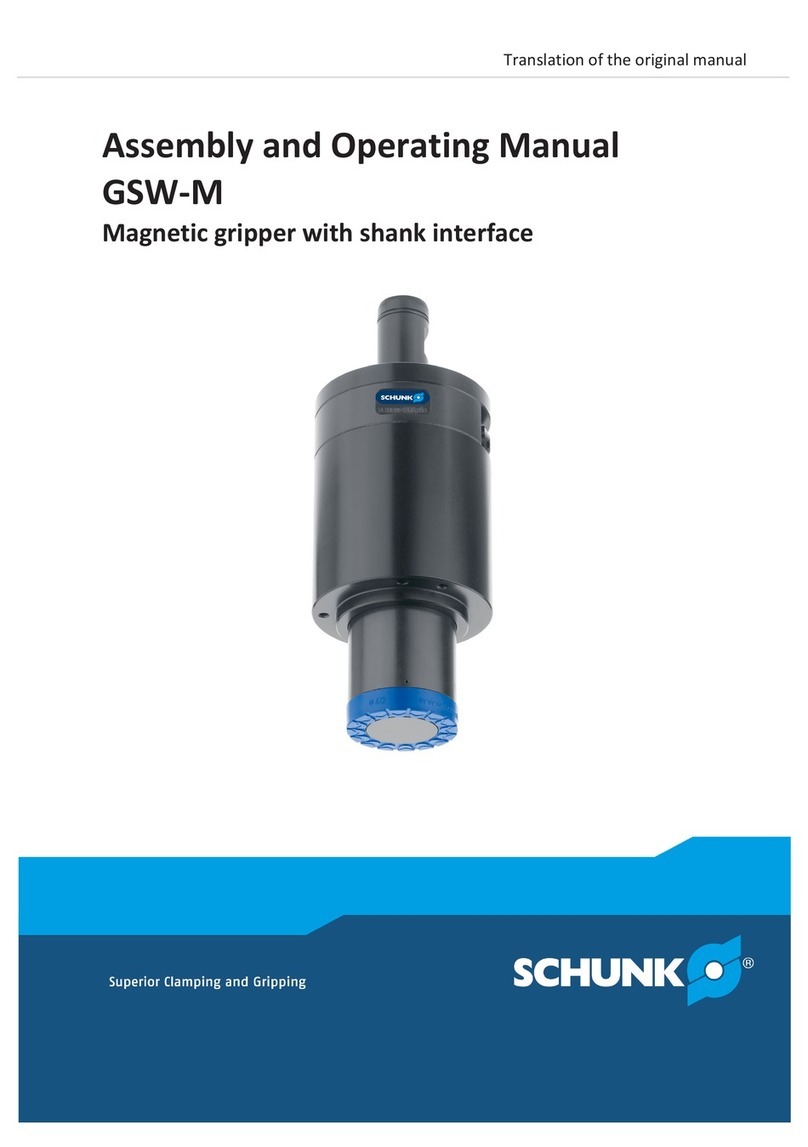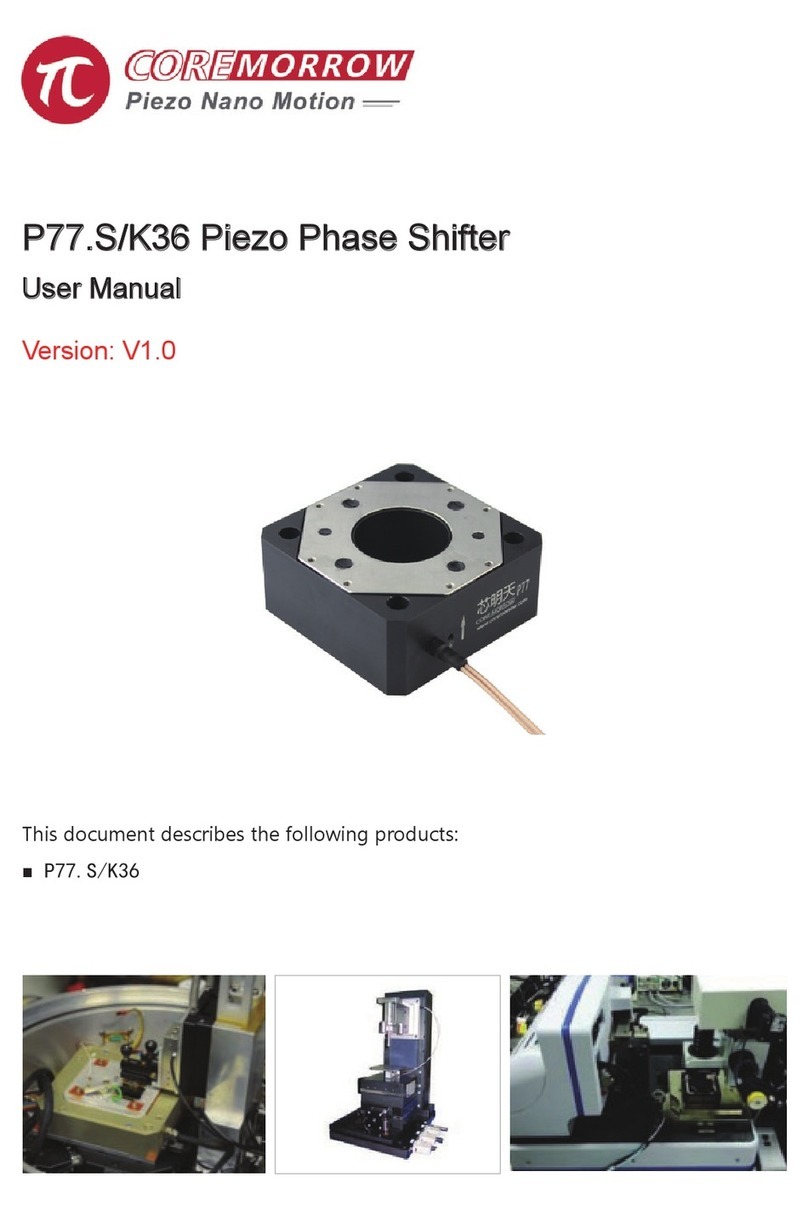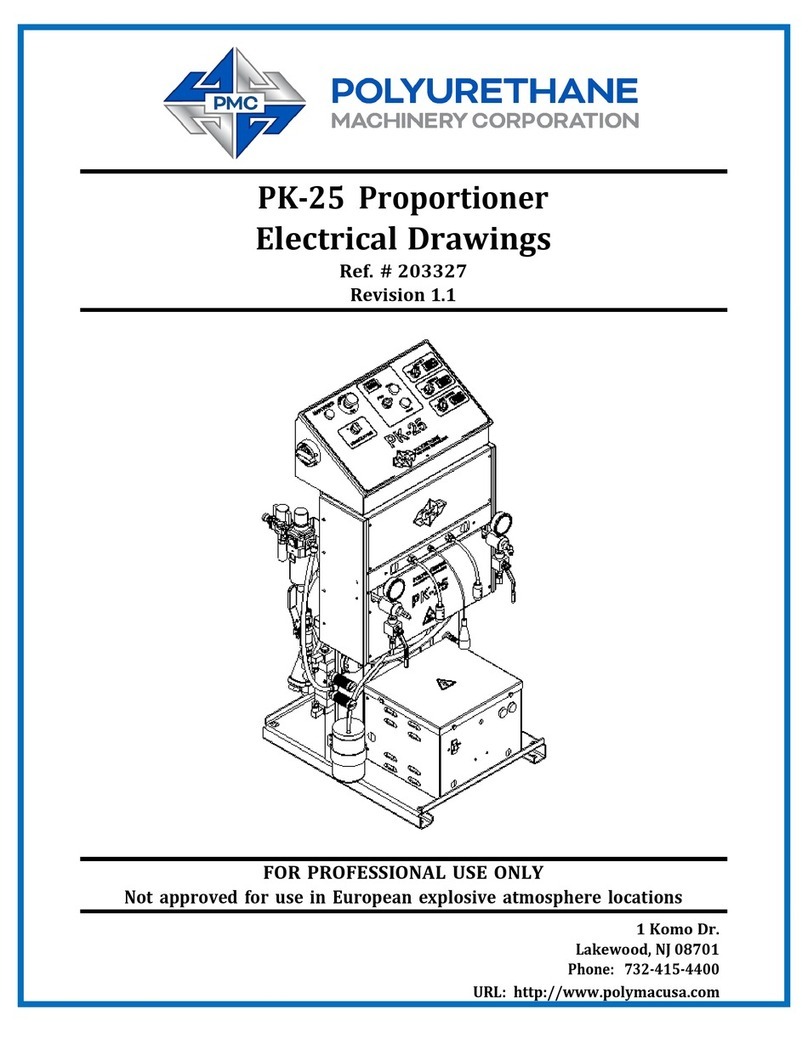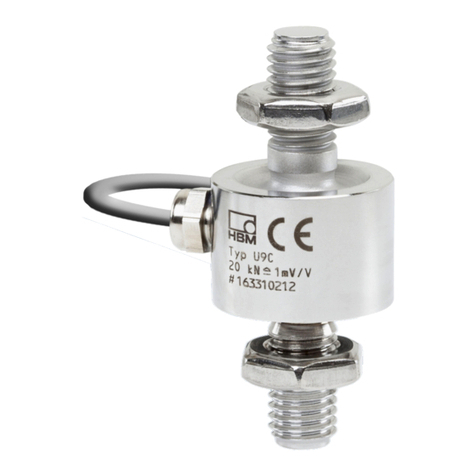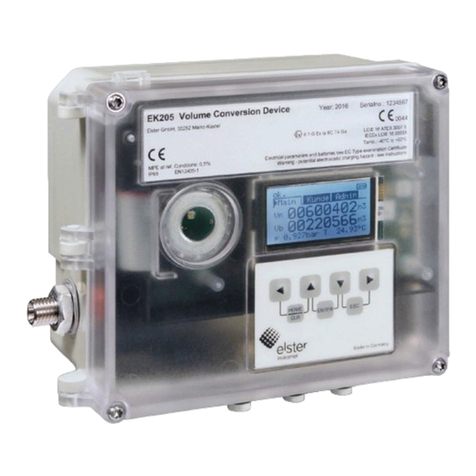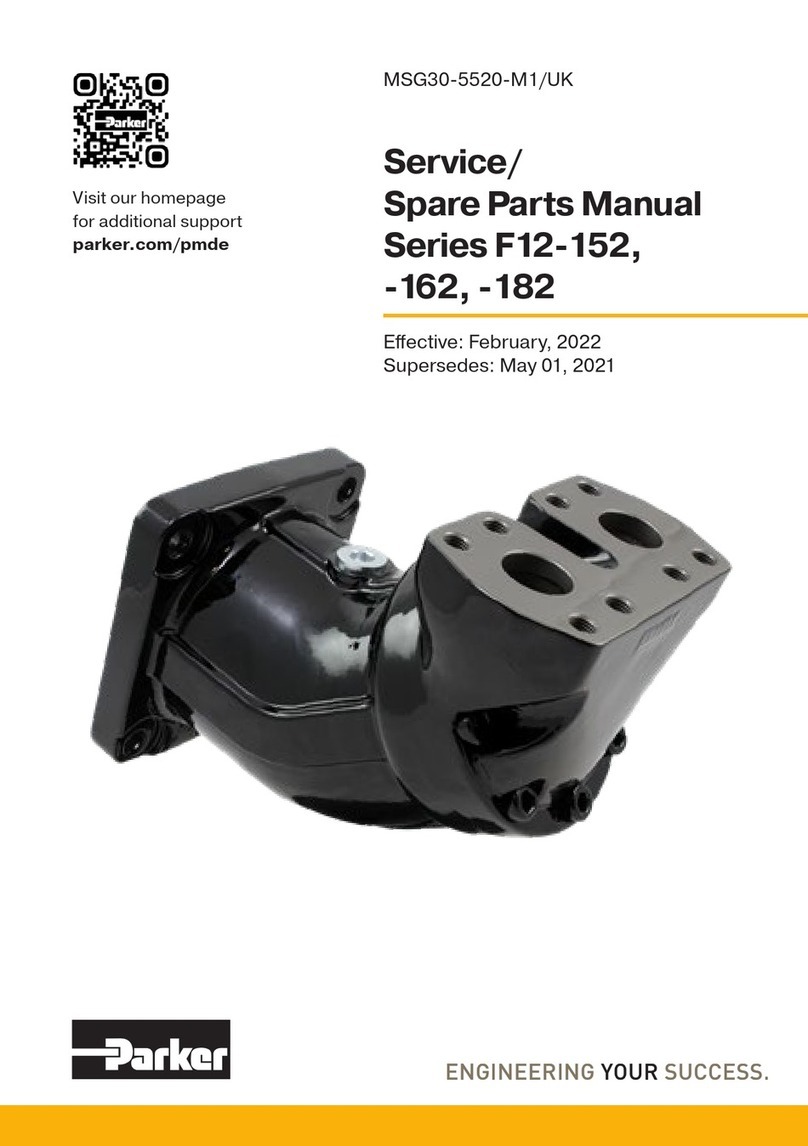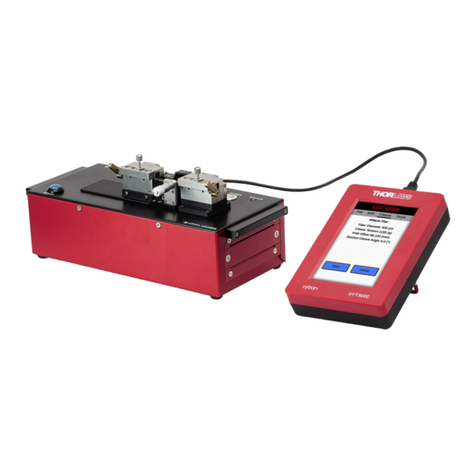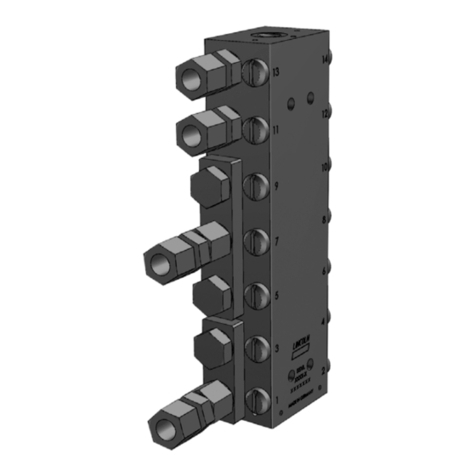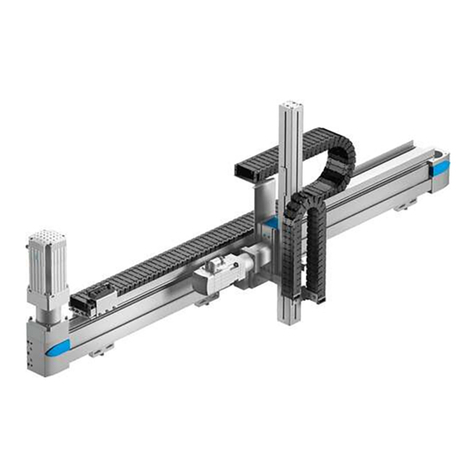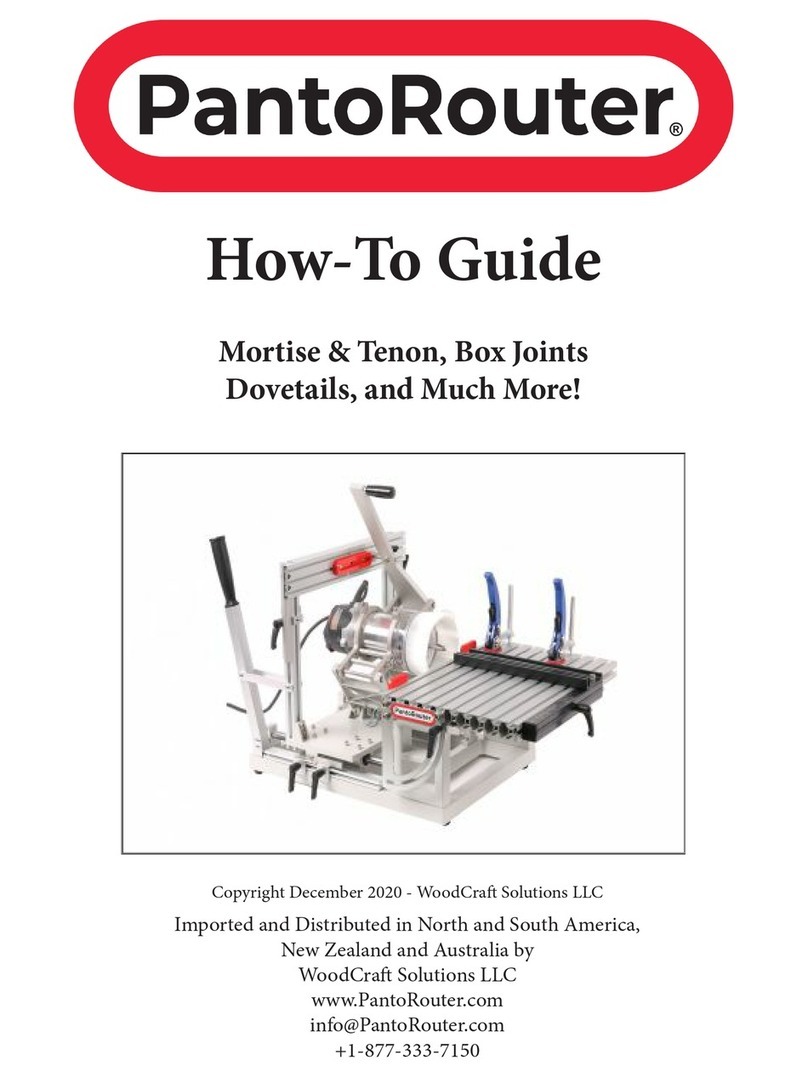Cole Parmer Techne IFB-201 User manual

Instruction Manual
Version 9
Industrial Fluidised
Bath System
IFB-201

IMPORTANT SUPPLEMENTARY SAFETY INFORMATION
Introduction
Techne fluidised baths are safe and effective equipment when installed and operated correctly in accordance with
the user manual. However, if used incorrectly they can pose a safety risk. Techne have designed all models of fluid-
ised baths to protect operators from hazards but users should pay attention to the following points.
Caution
Please read the user manual before installation and use.1.
Techne fluidised baths can heat up to 600°C, 700°C or even 1100°C. High temperatures are dangerous and2.
can cause serious burns to operators and ignite combustible material.
Use care and wear protective gloves to protect hands and protective glasses to protect eyes.3.
Do not put hot objects on or near combustible objects.4.
Do not operate the unit close to inflammable liquids or gases.5.
Do not place any liquid directly in the unit.6.
Always ensure a suitable, adequate ventilation system is used when equipment is in use.7.
Always install fireproof metal ducting with sufficient airflow.8.
Maintenance
When performing maintenance always disconnect from power supply and cool below 50°C.1.
Techne recommend regular cleaning of fluidised baths. Externally, wipe with a damp soapy cloth. No abrasive2.
cleaners. Care should be taken to prevent any water entering the unit.
Regular internal and external inspection of extraction ducting is recommend to detect any damage and3.
ensure the internals are clean. Any build-up of particles or debris discovered in the extraction ducting requires
the ducting to be cleaned or replaced.
In fluidised baths used for polymer burn-off, please regularly inspect fluidising medium, remove any foreign4.
debris and replace with clean fluidising medium as required.
Never top-up a hot fluidised bath with cold fluidising medium. Always cool below 50°C first.5.
Please note
1. Please ensure an adequate risk assessment is performed before use of a fluidised bath.
2. Please ensure the appropriate temperature is used for the application, always stay safely below the combustion
temperature of any material or sample in a fluidised bath.
3. Fluidising airflow must be switched on before heating a fluidised bath, and left operational until the baths
cools to below 50°C unless performing dead-bed calibration function.
4. Do not overfill fluidising media. The fill-level is 6 inches (15cm) below top surface when cold.
5. In fluidised baths used for polymer burn-off, always remove excess polymer from sample.
6. In applications where materials being treated produce acidic vapours during thermal decomposition,
it is recommended a fume scrubber is utilised to ensure fume emission from the plant conforms to local
regulations.
7. If you have any questions please contact [email protected].
2

IFB-201 OPERATOR’S MANUAL
CONTENTS PAGE
TION
SAFETY and INSTALLA
OPERATOR SAFETY
Warning note
General description
Specification
INSTALLATION
Fume ignition
Fume cleaning
OPERATION
Operating procedures for plastic residue
MAINTENANCE
Maintenance procedures for PVC etc
FAULT FINDING
Spare parts
Accessories
Diagrams
'(&/$5$7,212)&21)250,7< 27
4
7
7
8
10
15
17
19
20
22
23
23
11
13
14
24
3

SaFety anD InStallatIOn
Please read all the information in this booklet before using the unit.
WarnIng
HIGH TEMPERATURES ARE DANGEROUS: they can cause serious burns to operators and ignite
combustible material.
Techne have taken great care in the design of these units to protect operators from hazards, but
Operators should pay attention to the following points:
•USE CARE AND WEAR PROTECTIVE GLOVES TO PROTECT HANDS.
•DO NOT put hot objects on or near combustible objects.
•DO NOT operate the unit close to inflammable liquids or gases.
•DO NOT place any liquid directly in your unit.
•At all times USE COMMON SENSE.
•This product is extremely heavy. To avoid injury ensure you use suitable lifting equipment.
OPERATOR SAFETY
All users of Techne equipment must have available the relevant literature needed to ensure their safety.
It is important that only suitably trained personnel operate this equipment, in accordance with
the instructions contained in this manual and with general safety standards and procedures. If the
equipment is used in a manner not specified by Techne the protection provided by the equipment to
the Operator may be impaired.
This unit has been designed to conform to international safety requirements and is fitted with an
overtemperature cutout. On this model the cutout is preset to protect the unit.
If a safety problem should be encountered, switch off at the mains.
SYMBOLS DEFINED
WARNING HOT
SURFACE
FIRE HAZARD 3 PHASE
ALTERNATING
CURRENT
RISK OF
ELECTRIC
SHOCK
HEAVY OBJECT
RISK OF
INJURY
4

The supply wiring should be of a specification suitable for the ratings indicated on the IFB rating
plate; in addition it should also comply with local, national and international standards where
applicable.
As every installation is unique, it is not possible to give detailed instruction regarding any drilling of the
cabinet base plate that may be required for routing of the supply cable. However, the cable must
be adequately secured with a suitably approved cable gland at the point it enters the cabinet. It is also a
requirement that the earth conductor is terminated in such a way that it is longer than the 3
phase conductors and also longer than the neutral conductor. This is to prevent, in the case of the
supply cable becoming insecure, the earth conductor disconnecting before the other 4 conductors.
INSTALLATION CONDITIONS
This equipment is designed to operate safely under the following conditions:
•For indoor use only
•Use in a well ventilated are
•Ambient temperature range 5°C to 35°C (41°F to 95°F)
•Altitude to 2000m (6500ft)
•Relative humidity not exceeding 75% decreasing to 30% and free from condensation
•Mains supply fluctuations not exceeding 10% of nominal
•Overvoltage category II IEC60364-4-443
•Pollution degree 2 IEC664
AFTER USE
When you have finished heating samples, remember that parts of the unit – the tubes, blocks and
associated accessories – may be very hot. Take the precautions listed earlier.
InStallatIOn
This Techne Industrial Fluidised Bath (IFB) is designed to be operated as a permanently connected piece
of equipment and must be installed by a fully qualified electrician with experience of installing 3 phase
equipment.
The IFB must be installed with an appropriately rated switch and/or circuit breaker included in the
building installation.
The switch or circuit breaker should be in close proximity to the IFB and within easy reach of the
operator.
The switch or circuit breaker should also be clearly marked as the disconnecting device for the IFB.
5

OPERATOR MAINTENANCE
NOTE: THAT THIS EQUIPMENT SHOULD ONLY BE DISMANTLED BY PROPERLY TRAINED PERSONNEL.
REMOVING THE SIDE, FRONT OR REAR PANELS EXPOSES POTENTIALLY LETHAL MAINS VOLTAGES.
THERE ARE NO OPERATOR MAINTAINABLE PARTS WITHIN THE EQUIPMENT.
In the unlikely event that you experience any problems with your unit which cannot easily be remedied,
you should contact your supplier and return the unit if necessary. Please include any details of the fault
observed and remember to return the unit in its original packing. Techne accept no responsibility for
damage to units which are not properly packed for shipping: if in doubt, contact your supplier. See the
Decontamination Certificate supplied with your unit.
1. Cleaning
Before cleaning your unit ALWAYS disconnect it from the power supply and allow it to cool below
50°C.
Your unit can be cleaned by wiping with a damp soapy cloth. Care should be exercised to prevent water
from running inside the unit. Do not use abrasive cleaners.
2. Overtemperature cutout
In the event of no heater power, check the mains plug and lead. Repeated operation of the cutout
indicates a serious fault: you may need to return the unit to your supplier for repair.
3. Fuses
Your unit is protected by one or two fuses. These should only be changed by suitably qualified personnel.
If the fuses blow persistently, a serious fault is indicated and you may need to return the unit to your
supplier for repair.
GUARANTEE
The unit is guaranteed against any defect in material or workmanship for the period specified on the
enclosed guarantee card. This period is from the date of purchase, and within this period all defective
parts will be replaced free of charge provided that the defect is not the result of misuse, accident or
negligence. Servicing under this guarantee should be obtained from the supplier.
Notwithstanding the description and specification(s) of the units contained in the Operator’s Manual,
Techne hereby reserves the right to make such changes as it sees fit to the units or to any component of
the units.
This Manual has been prepared solely for the convenience of Techne customers and nothing in this
Instruction Book shall be taken as a warranty, condition or representation concerning the description,
merchantability, fitness for purpose or otherwise of the units or components.
6

OPERATOR SAFETY
It is important that only suitably trained personnel operate this equipment. It must also be used in
accordance with the instructions contained in this manual and with proper safety standards
and procedures.
It is imperative that all personnel who may come into contact with our equipment have access to our
literature so they can ensure their safety.
If there is any doubt whatsoever relating to the proper use of this equipment we will be pleased to
assist you.
It is advisable to read the whole of this book before commencing work with the unit.
WARNING
Poor fluidisation causes hot spots, heater failure, and damage to other parts. Follow instruction book
carefully. For correct fluidisation, pay attention to;
INSTALLATION
Ensure bath is level and air supply is adequate.
OPERATION
Adjust air valve for even fluidisation.
Do not insert objects larger than recommended.
Ensure objects do not lie in contact with container wall or porous plate.
MAINTENANCE
Regularly inspect and maintain air filter to eliminate oil vapour in air supply.
ALUMINA
Should the fluidised bath be stirred for a long period of time under damp or humid conditions, moisture
may be absorbed by the alumina which is hydroscopic. To avoid violent fluidisation which occurs when
damp alumina is heated above 100°C, operate the bath for a period of approximately 8 hours at 90°C
prior to operation at elevated temperatures.
NEVER ADD COLD OR DAMP ALUMINA TO A HOT BATH AS THIS WILL ALSO CAUSE VIOLENT FLUIDISATION
WHICH CAN BE DANGEROUS. Allow the bath to cool then add the fresh alumina. If this
fresh alumina is a large portion of the charge then dry the whole charge as above.
FUME EXTRACTION
When used for processing items which may emit toxic or inflammable fumes, it is essential that an
adequate fume extraction system be installed. The extraction system must be correctly sized to ensure
that any toxic fumes are removed from the working environment.
To eliminate the risk of spontaneous ignition, the concentration of inflammable fumes above the bath
and within the exhaust duct work must be kept below the lower explosive limit.
7

GENERAL DESCRIPTION
The fluidised bath employs the principle of fluidisation of a mass of finely divided inert particles by means
of an upward flow of gas. A state of fluidisation is achieved when the individual particles become
microscopically separated from each other by the moving gas. This “fluidised bed” of particles has
unusual properties which differ markedly from either those of the gas or of the solid particles. Instead,
the fluidised bed behaves remarkably like a liquid, exhibiting characteristics which generally attribute to
a liquid state. For example, the fluidised bed can be agitated and bubbled; it always seeks a common
level; materials of less density will float while those with densities greater than the equivalent fluidised
bed density will sink; and, most important, the heat transfer characteristics between the fluidised bed
and a solid interface can have an efficiency approaching that of an agitated liquid.
In addition, the fluidised solid phase has a most unusual physical behaviour, in that its basic characteristics
change only slightly over very large temperature ranges; it has no melting point and no boiling point.
The lowest temperature available is the liquefaction point of the gas used for fluidisation, while the high
temperature level is usable temperature of the inert solid. Various metal oxides with allowable
temperatures of over 1700°C are readily available. The metal oxide beds commonly used, (eg aluminium
oxide) are non-flammable, non-explosive and non-toxic.
The most commonly used fluidised gas is ordinary compressed air obtained from a blower or compressor.
For situations where a non - oxidising atmosphere is required, nitrogen can be utilised and if a reducing
atmosphere is required, cracked gas can be employed with a silicon carbide bed.
The unique characteristics of gas fluidised particles is the relatively high rate of heat transfer which yields
highly isothermal conditions, as well as excellent heat transfer to solid surfaces. This characteristic is due
to the turbulent motion and rapid circulation rate of the solid particles in conjunction with the extremely
high solid gas interface area. Therefore, despite the fact that gas solid interfaces normally yield low heat
transfer coefficients and the solids normally have low thermal conductivities, the overall heat transfer
characteristics of fluidised particles approach those of a liquid.
The combination of excellent heat transfer characteristics and high heat capacity are ideal for attaining
rapid stabilisation at an isothermal condition.
Techne industrial fluidised baths use aluminium oxide as the fluidising medium. They have been designed
to remove plastic residue from extruder and moulding machine tools, paint build up from paint fixtures,
and carry out various heat treatment processes.
The fluidised bed is housed in a circular stainless steel container which has an effluent gas extract duct
and fluidised medium drain chute. The container is surrounded by electrical heating elements which are
enclosed within thermal insulation. The inner assembly is housed in a square outer case which also
supports the electrical and pneumatic control console.
The following control options are available:
A manual control system which consists of a temperature controller, an independent over-temperature
cut-out device, a fluidising air pressure interlock, and a manually adjusting fluidising air control valve.
Supplied as standard with this, and all other options, is an air pressure regulator and filter assembly.
During operation the correct fluidising air flow must be determined by visually inspecting the surface of
the fluidised bath. When the fluidised bath is heated the air within the bath expands; it is therefore
8

necessary to decrease the amount of air supplied to the bath during the heat up period to ensure that
the bath is correctly fluidised at all times.
A control system with automatic air control is also available. This system is designed to automatically
adjust the fluidising air flow rate as the bath heats up. This allows the system to be operated without
supervision and is useful in applications where it is advantageous to preheat the bath prior to the start
of the working day.
The system is programmed to feed a set amount of fluidising air to the bath between room temperature
and 200°C. When the bath reaches this temperature, the amount of air feed to the bath is reduced and
held at constant value until the temperature of the bath exceeds 400°C, at which point a further
adjustment is made.
A non-standard version of this industrial fluidised bath is available for applications where continued
treatment of components contaminated by PVC and other halogenated polymers is envisaged. This
version is manufactured from materials that resist the effects of corrosion which are experienced when
processing the above polymers.
The compressed air supply to the fluidised bath must be clean, dry, and free from oil.
When used for processing items which may emit toxic or inflammable fumes it is essential that an
adequate fume extraction system be installed.
The extraction system must be correctly sized to ensure that any toxic fumes are removed from the
working environment.
To eliminate the risk of spontaneous ignition the concentration of inflammable fumes above the bath
and within the exhaust duct work must be kept below the Lower Explosive Limit. A later section of this
manual details the various fume treatment equipment that is available, and how it should be installed
and adjusted.
9

TECHNICAL SPECIFICATION
Temperature range 50°C to 600°C
Temperature control stability at 450°C +5°C
Temperature uniformity at 450°C 10°C
Internal dimensions length 500mm
width 220mm
depth 515mm
working depth 330mm
maximum media depth
Loading capacity 1/3 of vol.
1/3 of C.S. Area
Typical heat up time; 20°C to 450°C
20°C to 600°C
Compressed air supply pressure
Air consumption:- maximum
At 450°C
Nominal Heater Power
Heater type
Control system
Electrical safety protection
Fluidised medium
External dimensions height
width
depth
Nett weight (less fluidised medium)
Gross weight (less fluidised medium)
Voltage supply required (50/60hz)
395mm from porous plate to top of media
when fully loaded and fluidised.
12 litre
36,666mm2
180 minutes
350 minutes
204-1030kPa (30-150psi)
220 l/min
150 l/min
9kW
4 semi embedded heating elements
3 term PID temperature controller
with thermocouple sensor and solid state relay.
Control circuit fuse
Power fuses
60kg Aluminium Oxide, Part No F0885
930mm
1155mm
660mm
272kg
322kg
380V 3 phase
415V 3 phase
480V 3 phase
Contact your local sales specialist or email
[email protected] for full details
10
Fuses

INSTALLATION
INDUSTRIAL FLUIDISED BATH SYSTEM
Fig 1
Cyclone 100mm Ducting
Dilution 200mm Flue
Tee
Fan
150 to
100mm
Reducer
(when
required)
Fluidised Bath Collection Scrubber Caustic Doser Afterburner
Bath
Mount the fluidised bath in the position where it is to be used. It is important to ensure that the bath is
level, otherwise it will fluidise incorrectly. This will lead to the formation of large temperature gradients
across the bath which results in premature heater failure and possible damage to the porous plate and
inner container assemblies.
Connect any associated fume treatment equipment to the fluidised bath effluent gas extract duct. See
section which follows on Fume Cleaning.
Check that the heater isolation resistance (measured from the load side of the solid state relay, to earth)
is at least 2.5M ohm before connecting the electrical circuit to the electrical supply. See attached circuit
diagram for connection details and the unit rating plate for details of the electrical supply required.
The compressed air supply to the fluidised bath must be clean, dry, and free from oil.
If a manual control option is fitted, close the air flow adjusting valve which is situated on the front of the
control console, and connect the air inlet port at the rear of the control console to a suitable dry, clean
air supply. Make sure that the pressure delivered to the fluidised bath is between 204kPa (30psi) and
1030kPa (150psi), and that the compressed air line is capable of supplying sufficient air to fluidise the
bath (see specification details).
Fill the fluidised bath with a sufficient quantity of aluminium oxide so that, when fluidised, the distance
between the top of the aluminium oxide and the top of the bath is 120mm when the bath is fully
loaded.
11

Should the fluidised bath be stored for long periods of time under damp or humid conditions, moisture
maybe absorbed by the alumina which is hydroscopic. To avoid violent fluidisation which occurs when
damp alumina is heated above 100°C, operate the bath for a period of approximately 8 hours at 90°C
prior to operation at elevated temperatures.
NEVER ADD COLD OR DAMP ALUMINA TO A HOT BATH AS THIS WILL ALSO CAUSE VIOLENT
FLUIDISATION WHICH CAN BE DANGEROUS. Allow the bath to cool then add the fresh alumina. If this
fresh alumina is a large proportion of the charge then dry the whole charge as above.
Set the air pressure regulator, which is situated within the pneumatic section of the control console to
204kPa (30 psi).
The following table shows the recommended fluidising air flow rates which should be used to achieve
the correct level of fluidisation.
100°C to 200°C 220 l/min
200°C to 400°C 180 l/min
400°C to 600°C 150 l/min
The figures quoted are approximate and may need to be varied depending upon the working load, eg
the bath may have to be ‘overfluidised’ to avoid the creation of dead spots above the immersed
object.
To safeguard the fluidised bath from damage two safety features are included in the control console: an
overtemperature cut-out (set at 630°C) which guards against controller failure, and an air pressure switch
which inhibits operation if the compressed air supply to the fluidised bath fails. Both of these devices
isolated the electrical supply to the heater elements and illuminate the cut-out indicator in a fault
condition.
If the fluidised bath is to be used to process items that may emit toxic or inflammable fumes, it is essential
that an adequate fume extraction system be installed. Details of fume cleaning equipment are contained
in the following section of this manual.
The extraction system must be adjusted during initial operation for optimum extraction in line with the
following instructions:
a) Heat the fluidised bath to the operating temperature as recommended later in this manual, ensuring
that the fluidising air flow rate is adjusted in accordance with the above table. Remember that the lid
must be fitted.
b) Switch on the fume extraction system.
c) Immerse a typical component that is to be treated into the fluidised bath; do not exceed the started
loading capacity, see Technical Specification for details.
d)
Adjust the overall fume extraction rate by adjusting the setting of the damper valves built into the
fume extraction system so that adequate fume removal occurs over the surface of the fluidised bath.
The velocity of the extraction system should be just sufficient to entrain the maximum quantity of
fumes produced above the bath. If a high extraction velocity is used, an excessive amount of fluidising
medium will be entrained by the extraction system.
12

3
e) Measure the fume concentration within the fume extraction system using an explosimeter and ensure
that the Lower Explosimeter Limit (LEL) is not exceeded. The fume concentration may be diluted by
fitting a dilution tee into the extraction ductwork directly after the fluidised bath. Air may then be
induced into the system to dilute the effluent gases. It is recommended that the maximum fume
concentration be less than 25% of the LEL.
f) Measure the fume concentration in the working environment adjacent to the fluidised bath using
suitable gas analysis equipment such as ‘Drager’ tubes, to ensure that any toxic fumes generated
within the fluidised bath have been diluted so that the fume concentration is below the threshold limit
value. Recommended Threshold Limit Values (TLVs) are available in publications such as the Health and
Safety Executives Guidance Note EH15/76 in the UK.The figures quoted are approximate and may
need to be varied depending upon the work load, e g the bath may have to be over fluidised to avoid
the creation of dead spots above an immersed object. For details of how to adjust the fluidising air
flow rate when using the automatic air control system, see Item c) of the Fault Finding Section of this
manual.
Fume Ignition
Spontaneous ignition may occur above the surface of the fluidised bath or within the exhaust ductwork
if the concentration exceeds the lower explosive limit.
The fume concentration is dependent upon the rate of fume production in the fluidised bath and the
level of dilution achieved by entraining air from above the bath or through the dilution tee.
The rate of fume production is dependent upon the type and amount of material being treated and the
temperature of the bath.
To ensure that the concentration of inflammable fumes is below the lower explosive limit, ensure that
the amount of combustible material immersed in the bath at any one time is within the design capacity
of the extraction system. Ensure that the temperature of the bath is at the minimum level at which
satisfactory results can be achieved. Increased working temperatures result in increased fume
concentration. By way of example, an extraction rate of 2m /min is required to ensure that the fume
concentration is below 25% of the lower explosive limit when thermally decomposing 1kg/hr of
polythene at 450°C.
13

Fume Cleaning
When used for processing items which may emit toxic or inflammable fumes, it is essential that an
adequate fume extraction system be installed. A typical schematic diagram consists of the following
components:
An extraction hood that fits over the top of the fluidised bath to provide a peripheral extraction system.
Any fumes entrained from above the bath are passed to the effluent gas extract duct.
Ductwork to connect the fluidised bath extract duct via the various fume treatment equipment to the
input of the fume extraction fan. The ductwork should include an air dilution tee, positioned as close as
possible to the fluidised bath. The dilution tee enables the fumes within the system to be diluted with
air. The ductwork should also include a damper valve which is normally positioned adjacent to the
extraction fan. This valve allows the extraction velocity to be reduced. In general the ductwork may be
manufactured out of galvanised mild steel; however, in installations where PVC or other halogenated
polymers are being processed, it is recommended that stainless steel ducting is used. The ductwork
should be as short as possible and contain the minimum number of bends and horizontal runs so as to
reduce the possibility of a blockage.
A cyclone separator should be mounted directly after the dilution tee. The cyclone removes any fluidised
medium that may be present in the extracted fumes. The fluidisation medium is collected in the cyclone
collection bin from where it may be returned to the fluidised bath.
In applications where the components being cleaned are contaminated by polymers which contain
inorganic pigments or fillers such as titanium oxide, of a particle size less than 0.005mm diameter which
will not be retained by the cyclone, it is recommended that a filtration system be fitted after the
cyclone.
In applications where the materials being treated produce acidic vapours during thermal decomposition,
it is recommended that a fume scrubber be utilised to ensure that the final fume emission from the plant
conforms with local regulations. A caustic dosing system may also be required to ensure that the
scrubbing liquid is maintained at an acceptable pH level.
An extraction fan is required in all applications to provide the motive force for the exhaust. In applications
where it is not permissible to emit visible smoke from the plant or where local regulations specify the
maximum fume concentrations that may be emitted from an exhaust stack, an afterburner maybe
required. The afterburner heats the fumes to a point where thermal incineration eliminates the visible
content of the fumes while also reducing the fume concentration.
Finally, an exhaust stack is required to direct the treated fumes away from the working environment. The
exhaust stack will generally manufactured out of the same materials as the ductwork system. However,
in installations where an afterburner is fitted, the exhaust stack should be manufactured out of insulated
stainless steel.
The exact combination of fume treatment components required depends upon the application and local
conditions. Technical staff are available to discuss particular applications and offer advice as to which
combination is required.
Techne are able to offer the following fume treatment equipment:
Cyclone
Scrubber
Caustic Dosser
Extraction Fan
Afterburner
14

OPERATION
To set the temperature controller to the required operating temperature, switch on the electrical supply
which will illuminate the power and cut-out indicators. Then set the required temperature, by using the
up and down arrows on the Eurotherm controller. Depress the reset switch to initiate the system and
extinguish the cut-out indicator.
The following parameters have been factory set into the 2208L controller:
Al list Hy = 1
Pid List Pb = 20
ti = 360
td = 60
lcb = Auto
Hcb = Auto
OP List OpLo = 0
OpHi = 100.0
CycH = 1.0
OntH = 0.1
Accs List (Full level)
Enter 5744 password
Goto “OPer” select “Full”
Enter
SP List SSEL = SP1
SP1 = 0
SP2 = 25
SP1L = 0
SP1H = 630
SP2L = 0
SP2H = 630
SP1r = Off
Dwell = Off
endt = rset
Prog = rset
Stat = dwell
IP List filt = 1.6
OfSt = -20
CjCo = 40
mv = 19.7
15

For older units the following control parameters have been factory pre-set on the Eurotherm 807:-
High Alarm Hi Al 630°C 1166°F
Low Alarm Lo Al 0°C 32°F
Deviation Alarm D. Al 630°C 1166°F
Proportional Band P 17% 17%
Integral Time I 124 sec 124 sec
Derivative Time D 3 sec 3 sec
Heater Cycle Time HCT 0.3 sec 0.3 sec
High Cut Back HCB 17°C 62°F
Low Cut Back LCB 17°C 62°F
As the fluidised bath heats up the fluidisation will become more vigorous, due to the expansion of the
fluidising air. Units fitted with the automatic fluidising air control system will automatically reduce the air
input so as to keep a constant level of fluidisation. Manually operated units must have fluidising air flow
reduced until the level of fluidisation returns to its original state. The following table indicates the flow
rates that are factory set on an auto-air unit
Ambient to 200°C 220 l/min
200°C to 400°C 180 l/min
400°C to 600°C 150 l/min
The fluidised bath should be operated with the bath lid fitted to reduce heat loss during the heat up
period, and to increase the efficiency of the fume extraction system. As the temperature of the fluidised
bath approaches the set point, the heater indicator, situated in the temperature controller fascia, will
cycle on and off, until the actual temperature reaches the set point temperature.
It may be desirable, depending on the process being carried out in the fluidised bath, to check the actual
bath temperature with an independent temperature sensor. Any offset in the temperature may be
corrected by adjustment of the temperature controller (an instruction manual for the temperature
controller is included with this manual). Further temperature checks may be made at various points
within the fluidised bath to ensure good temperature uniformity is being achieved throughout the bed.
Slight adjustment of the fluidising air flow rates will reduce any excessive temperature gradients.
CAUTION: Care should be taken when handling hot parts which have been removed from a fluidised
bath. We recommend that protective clothing (gloves, aprons, and visors, etc) be worn at all times when
working with fluidised baths and that the installation and maintenance procedures outlined in this
booklet be followed explicate.
16

Special operating procedures for use when removing plastic residue
The industrial fluidised bath detailed in this manual is suitable for “burning off” plastic residue from
plastic machine tools, and is effective on the full range of polymers. In addition, the bath is also effective
on rubber, epoxy resins and various paints. The bath provides a safe, dry, and fast means of removing all
plastic residue with the minimum effort.
The process is controlled at a uniform temperature so that distortion of tooling due to uneven heating
which occurs when using other heating methods is avoided. Furthermore, as the fluidised bed is
non-abrasive, physical damage to parts is minimal.
The cleaning process relies on heat being transferred from the fluidised bed to the immersed tools, the
heat degrading the plastic residue. Objects to be cleaned should be supported in a basket or suitable
holder for ease of handling and lowered into the fluidised bed. To avoid physical damage and local
overheating, it is important to ensure that any items placed in the bed are supported and not allowed to
rest either on the porous plate at the bottom of the bed or against the wall of the inner container. The
bath should be operated generally in the temperature range of 450°C to 500°C, depending on the
polymer to be removed. The process time depends upon the thermal mass of the object, the amount and
type of polymer to be removed. During the first two thirds of the process time the polymer is reduced to
a tar mix, in this phase all the initially combustible products of the polymer are emitted from the fluidised
bath in the form of fumes that must be extracted and treated by suitable fume handling equipment.
During the last third of the process time the polymer is reduced to carbon which either burns away or
remains loosely bound to the object being cleaned.
Any carbon or incombustible filler that remains on the processed item can be removed by a secondary
cleaning operation, either by brushing or some form of water wash.
It is important to ensure that the items being processed do not exceed the maximum loading capacity
(see Technical Specification) and that they are loaded into the fluidised bath in such a way that the
fluidisation is not impended.
THE PROCESS RELIES UPON GOOD FLUIDISATION TO ENSURE GOOD HEAT TRANSFER; OVERLOADING
OR INCORRECT LOADING OF THE BATH WILL RESULT IN EXTENDED CYCLE TIMES GIVING INFERIOR
RESULTS. LOCAL OVERHEATING MAY ALSO OCCUR, GIVING RISE TO PREMATURE HEATER FAILURE AND
POSSIBLE DISTORTION OF THE INNER CONTAINER.
The aluminium oxide fluidising medium does not degrade but will need to be replenished due to loss
from spillage or entrainment in the exhaust (from where it may be recovered by a cyclone trap).
All articles should be completely cleaned and removed from the bed before shut down. Corrosion of
processed parts could be seriously increased if they are left immersed overnight. Furthermore, residual
polymer, instead of being burned off in a fluidised state, could percolate down through a static bed and
settle on the porous plate to cause a blockage and result in poor fluidisation.
When parts are removed from the bed they should be allowed to cool in air and, whilst still warm, treated
to prevent rusting.
It should be noted that some plastics and, in particular, paints contain fillers. These fillers are usually
inorganic materials and will not therefore burn when put into a fluidised bath, with the result that the
material falls away from the article being cleaned and is retained in the bath, either on the surface or at
the base of the bath, depending upon the density of the material involved. If this happens it is
recommended that the bath be checked and cleaned at least once a week or more frequently if the bath
is used continuously.
17

The following table details recommended operating temperatures for particular polymers. The
temperatures quoted should be used as an initial guide.
The ideal operating temperature will vary depending on the size of the components being cleaned and
the amount of material being removed. In general temperatures below 400°C should be avoided to
obviate the danger of the polymer melting and sinking to the bottom of the bath where it may block
the porous plate. With some large objects it may be desirable to preheat the bath to well above the
operating temperature so that the polymer temperature rapidly moves through the melting phase to the
burning condition.
Excessive operating temperatures should be avoided as they increase the fume concentration above the
bath and may result in the formation of condensed fumes within the extraction system.
Material Burn-off temperature °C
Nylon 450
Paint 475-575
Polythene 450-500
Polyproplene 425-500
PTFE 500
PVC 450-500
Silicone rubber 550
Ethylene methacytic 450-480
Polyurethane 440-450
Rubber debonding 350 (debonding)
Polycarbonate 400-425
Polystyrene 450
Organic matter oil/grease 450-500
High density polythene 450
Polyesters 450
Flouropolymers 500
Styrene 450
18

MAINTENANCE
1) The aluminium oxide fluidising medium, not being degradable, will only require replacement when
losses occur due to attrition and spillage, or contamination with inert pigments, fillers or acidic by
products from the cleaning process. Fluidising medium lost through entrainment in the exhaust may
be collected in a cyclone trap.
Should the fluidised bath be stored for long periods of time under damp or humid conditions,
moisture may be absorbed by the alumina which is hydroscopic. To avoid violent fluidisation which
occurs when damp alumina is heated above 100°C, operate the bath for a period of approximately
8 hours at 90°C prior to operation at elevated temperatures.
NEVER ADD COLD OR DAMP ALUMINA TO A HOT BATH AS THIS WILL ALSO CAUSE VIOLENT
FLUIDISATION WHICH CAN BE DANGEROUS.
Allow the bath to cool then add the fresh alumina. If this fresh alumina is a large proportion of the
charge then dry the whole charge as above.
2) On a daily basis at least, the bed should be cleaned of floating residues by means of a wire mesh
hand scoop. This procedure removes carbon char which impairs fluidisation and acts as an
absorbent.
3) The air line filter supplied with the fluidised bath is self draining. However, it should be kept in good
condition by inspection at two weekly intervals and by cleaning the bowls and washing or replacing
the filter elements as necessary. With exceptionally dirty or wet air supplies this frequency may have
to be increased. Free water or water vapour in the air supply is a notorious source for the production
of hydrochloric acid in the bed when PVC is being processed.
B13 Regulator Filters
On automatic-drain models no adjustments are necessary. Clean filter element and automatic-drain
protective screen regularly. If required automatic-drain models can be manually tripped by pushing
a blunt ended rod up through the bottom of the mechanism to completely purge the bowl.
To remove the filter element shut off the air supply (bleed off pressure from unit unless exhaust type
Shut-Off Valve fitted) and unplug filter from the Unidaptor. Replace with standby unit and service
filter at workbench.
Unscrew the bowl anti-clockwise, unscrew the baffle from the stacked rod and withdraw the
element, gasket, louvre and ‘O’ ring.
Wash element in paraffin and blow out thoroughly with compressed air. Clean plastic bowl in SOAPY
WATER.
The filter element 6009248, may be replaced if heavily contaminated.
F51 Filters
Unscrew bowl, complete with gasket/‘O’ ring, and the main element by hand. Remove prefilter
element. On F51 models this pre-filter element is retained by a nut and incorporates a spacer. Partial
cleaning of the pre-filter element can be achieved by washing in warm water and detergent, and
drying with compressed air - renew if heavily contaminated. Fit new main element gasket/ ‘O’ ring
and replace main element and pre-filter element. The main element 6009247 may need renewing
after two years service or if pressure drop becomes excessive. It is not designed to be cleaned.
In addition, oil vapours in the air supply which reach the porous plate are carbonised within the
pores of the plate, quickly causing blockage and consequent poor fluidisation, local overheating,
premature heater failure and possible distortion of the inner container.
19

4) The fume extraction system (if used) should be regularly maintained. The cyclone trap collection bin
should be emptied at the end of each days use; the collected fluidising medium being returned to
the fluidised bath. It is important to ensure that the air tight seal between the cyclone and collector
bin is remade.
For maintenance of other fume treatment equipment see the associated maintenance manuals.
5) Any media trapped in the extraction hood should be cleared to ensure that all fumes are removed
from the working area through the extraction system.
The top cover/hood can be removed and any media should be returned to the bath.
SPECIAL MAINTENANCE PROCEDURES TO BE ADOPTED WHEN BURNING OFF PVC OR OTHER
HALOGENATED POLYMERS
Burning off PVC (poly vinyl chloride) in a fluidised bath offers one of the most severe conditions of
operation. Hydrogen chloride (HCL), liberated on the breakdown of PVC, is absorbed by the bed
medium, creating an acidic environment within the bed, especially when the bed also absorbs water
from the atmosphere or fluidising air when cold. HCL is extremely corrosive, especially when aerated
and wet. In addition, in water it produces water ions which, even in neutral or alkaline solutions,
promote corrosion and rusting in steel; witness for example, the corrosive nature of sea water and
calcium chloride road de-icer.
Consequently, fluidised beds used for burning off PVC require strict supervision to minimise
corrosion of the bed its self and of the parts cleaned in it, especially if these are of uncoated steel.
The purpose of most of the recommended maintenance procedure is aimed at keeping the bed
medium clean and free flowing, and free of gums, acids, agglomerates, partly decomposed plastic,
char and larger particles. These cleaning processes have the additional benefit of ensuring good
fluidisation and this, in turn reduces burn off time, reduces uneven heating of parts and thus
distortion, increases heater life by eliminating localised hot-spots, and makes cleaning easier on a
regular basis.
The following instructions apply generally to halogenated polymers and specifically to PVC. They are
aimed at minimising corrosion of the bath and of immersed metals.
A) DAILY INTERVALS - at the end of each working day
1) Maintain the working temperature (about 400°C) for half an hour after the last processed
batch, to assist removal of corrosive acids from the bath.
2) If possible, maintain the temperature of the bath at about 100°C overnight and over
weekends and holidays to reduce absorption of water vapour into the batch. Overnight, the
residual heat in the bath will usually ensure this.
3) Scoop charred plastic residues, clods of media and articles being processed.
B) WEEKLY INTERVALS - at the end of each working week and before prolonged shut-downs
1) Ensure compliance with instruction A, above.
2) Add about 50g (2oz) of powdered mild alkali to the bath and mix in well by maintaining
fluidisation for 5 minutes. Suitable alkalis are limestone, dolomite, hydrated or slaked lime,
sodium bicarbonate, sodium carbonate, magnesia. The addition of corrosive alkalis such as
caustic soda (sodium hydroxide) and quick lime (calcium oxide) should be avoided.
20
Table of contents
Other Cole Parmer Industrial Equipment manuals
Popular Industrial Equipment manuals by other brands
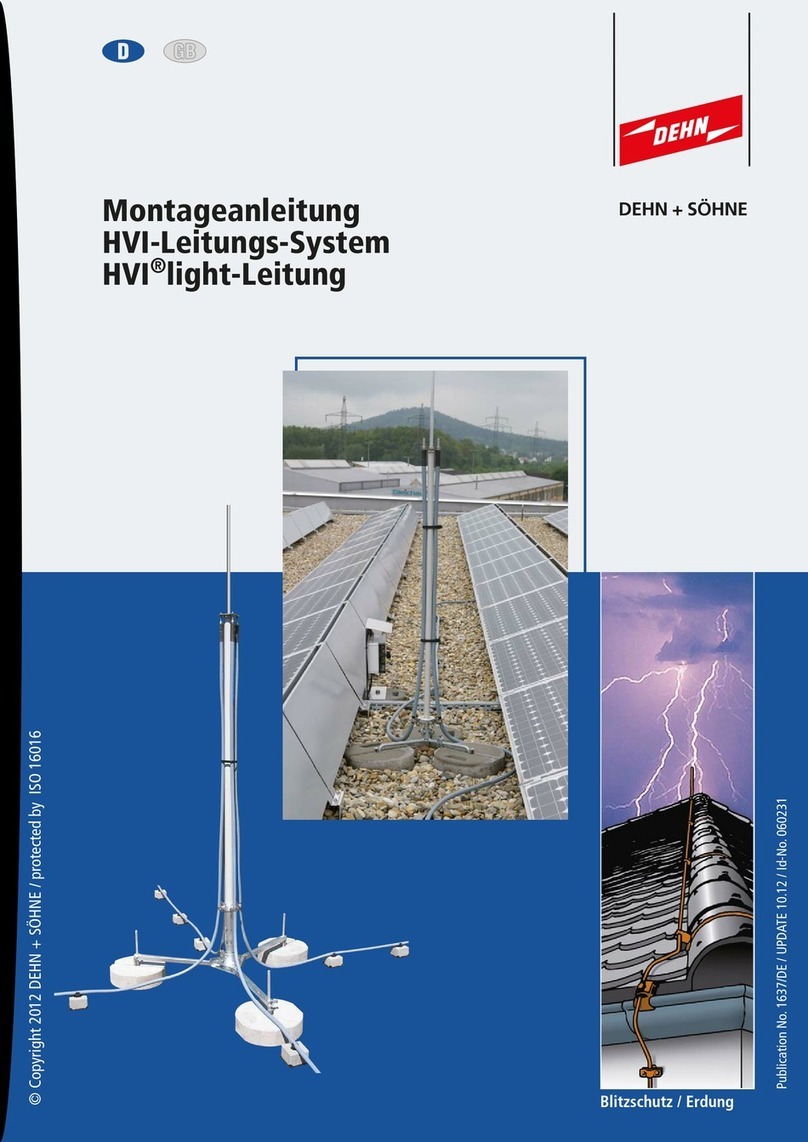
DEHN + SÖHNE
DEHN + SÖHNE HVI Series installation instructions
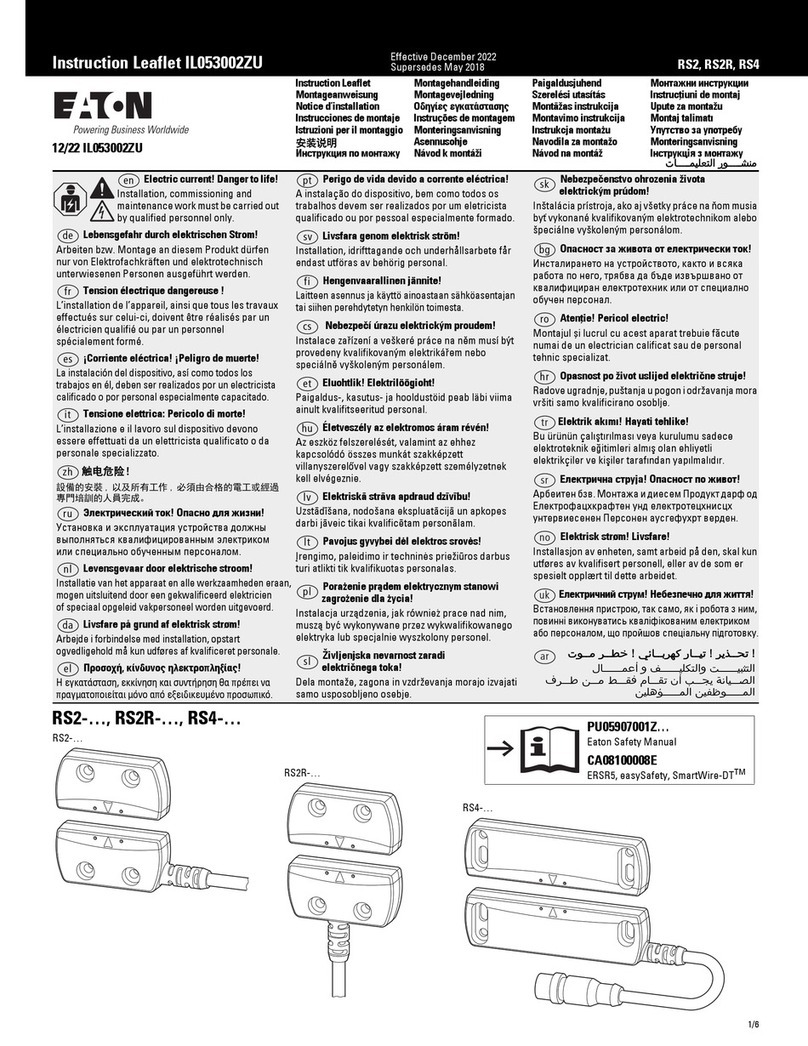
Eaton
Eaton RS2 Series Instruction leaflet

R.V.R. Elettronica
R.V.R. Elettronica RXRL-NV Technical manual
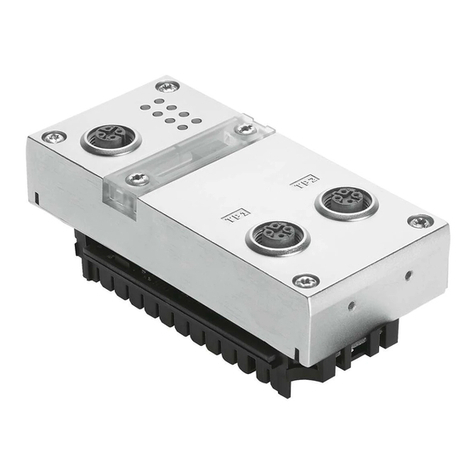
Festo
Festo CPX-FB33 operating instructions

Horizon Fitness
Horizon Fitness H-12 user manual
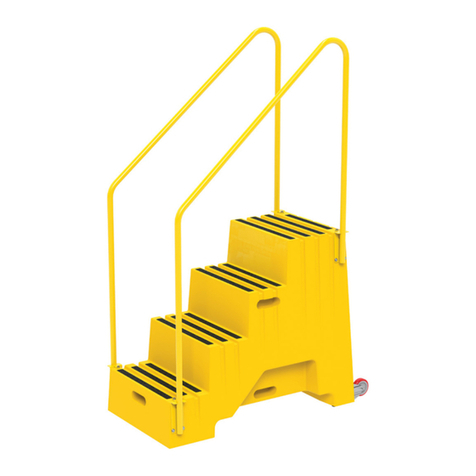
Vestil
Vestil VST-4-Y Use and maintenance instructions


